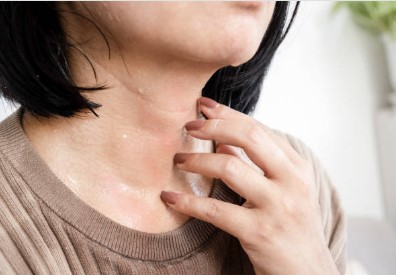Intertrigo FAQs
Find out more about this common skin condition with these intertrigo FAQs:
What does a sweat rash look like?
An intertrigo rash can appear as spots, patches, or a series of bumpy raised areas and is often red or pink. That said, intertrigo can look maroon, purple, or brown on darker skin tones or certain areas of the body.
A particularly inflamed sweat rash may indicate a secondary infection from bacteria or fungus, especially if the area develops a bad smell.
Is sweat rash itchy?
Yes, sweat rash can often feel itchy, uncomfortable, prickly, and painful. Scratching intertrigo can make it worse by breaking the skin and increasing the risk of infection.
How long do sweat rashes last?
A sweat rash usually lasts between two and six weeks. Beyond this, it would be referred to as chronic intertrigo.
How do you treat sweat rash?
If you have intertrigo with no infection, you can treat this by keeping the affected area clean and dry and applying a protective cream. If the intertrigo is infected, your doctor will prescribe a specific intertrigo cream and, if necessary, an oral medication.
How do you stop sweat rash?
You can help stop sweat rash from happening in the first place by showering after exercising, using a barrier cream to protect the area from friction, and wearing loose clothing made from natural fibres.
Medicareplus is a leading specialist in skin protection products. Explore the full range of Medicareplus products today. 



 Success!
Success!